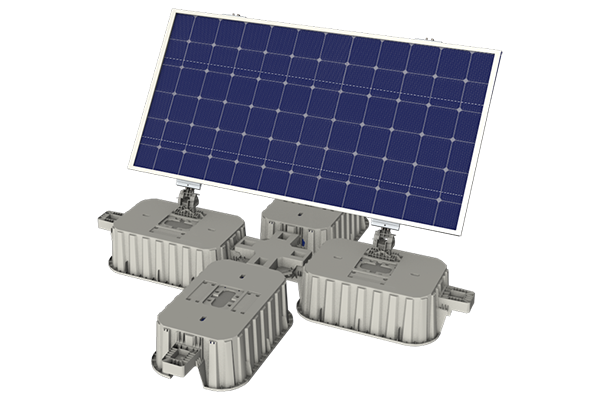Solaris Float has developed a floating solar solution with single- or dual-axis tracking. The floating island slowly rotates around a central point, powered by electric engines that reportedly consume less than 0.5% of the energy produced. The system rotates in one direction during the day, tracking the sun, and then rotates in the opposite direction during the night, to return to its original position.
The company claims that the Protevs solution produces up to 40% more electricity than floating fixed-tilt systems. This includes a production increase of around 15% due to temperature cooling resulting from the proximity to water.
The company installed its first pilot project in 2020 on Oostvoornse Meer, which is a lake near Maasvlakte, in the Netherlands. The 50.7 kWp installation includes 130 PV modules on a single-axis tracker. The project is part of a research initiative launched by a consortium led by Dutch research organization TNO, which aims to install 2 GW of floating solar in the Netherlands by 2023.
Solaris Float offers two versions of the Protevs, which can be adapted to different projects. The Protevs + is a floating island featuring 180 modules with dual-axis tracking. It has a diameter of 38 meters and occupies an area of 1,444 square meters. The solution has an installed capacity of 73 kWp with 370 W modules. Each of the panels can move vertically.
The Protevs Single360 is a single-axis solution, with PV modules mounted on a fixed slope of 10 degrees. The floating island is composed of 360 modules, with an installed capacity of 147 kWp for 410 W panels.
Popular content
The Protevs solutions are modular, detachable and scalable, as the floating islands can be merged to form a floating solar farm, according to the company. A farm of seven floating islands would reportedly have an installed capacity of 1 MW, producing 2 GW/year of electricity under normal conditions.
The floating system was designed for use in relatively calm waters, such as lakes and reservoirs. To accommodate changes in water level, the island is secured in place by an outer ring attached with cables and anchors so that it can move up and down up to 20 or 30 meters. It is also designed to resist a wide variety of environmental conditions, such as salt water and waves up to one meter high. It is made of 100% recycled materials which can be recycled after the project’s lifetime.
The technology was invented by Portuguese scientists at the INEGI investigation center in Porto, Portugal.
This content is protected by copyright and may not be reused. If you want to cooperate with us and would like to reuse some of our content, please contact: editors@pv-magazine.com.


1 comment
By submitting this form you agree to pv magazine using your data for the purposes of publishing your comment.
Your personal data will only be disclosed or otherwise transmitted to third parties for the purposes of spam filtering or if this is necessary for technical maintenance of the website. Any other transfer to third parties will not take place unless this is justified on the basis of applicable data protection regulations or if pv magazine is legally obliged to do so.
You may revoke this consent at any time with effect for the future, in which case your personal data will be deleted immediately. Otherwise, your data will be deleted if pv magazine has processed your request or the purpose of data storage is fulfilled.
Further information on data privacy can be found in our Data Protection Policy.